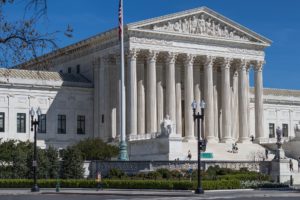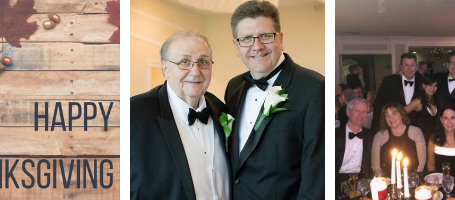On Abortion – The recent nomination of Brett Kavanaugh to become a Justice of the United States Supreme Court has brought the issue of abortion front and center once again. In an incredibly divisive world, abortion is probably the most divisive issue, as it strikes a visceral chord with folks on both sides. As a lawyer, I decided to take a close look at how the law surrounding abortion has developed and share my observations with all of you.
A woman’s constitutional right to an abortion is declared by the Supreme Court. In 1973, in Roe v. Wade, the Supreme Court held that the Constitution protects a woman’s right to choose to terminate her pregnancy prior to viability – the time at which a fetus can survive on its own outside the womb. The Court’s reasoning was that a woman’s right to privacy meant that she, and not the State, had control over her body. The Court further reasoned that forcing a woman to continue a pregnancy against her will would impose enormous physical and psychological burdens, and that an unwanted child  could impose upon the woman a distressful life and future. In deciding this way, the Court rejected the claim that fetuses prior to viability are “persons” deserving constitutional protection based on the rationale that there was no indication in the Constitution that the term “persons” was ever meant to include fetuses. The Court also noted that there appeared to be enormous disagreements among various religions and philosophies as to when human personhood begins, stating that: “When those trained in the respective disciplines of medicine, philosophy and theology are unable to arrive at any consensus, the judiciary … is not in a position to speculate.” Thus, under Roe and subsequent cases, American law is that the government may not prohibit abortions prior to viability, or after viability if the pregnancy endangers the mother’s health. Additionally, any state regulation regarding abortion cannot place an “undue burden” on the woman seeking the abortion.
could impose upon the woman a distressful life and future. In deciding this way, the Court rejected the claim that fetuses prior to viability are “persons” deserving constitutional protection based on the rationale that there was no indication in the Constitution that the term “persons” was ever meant to include fetuses. The Court also noted that there appeared to be enormous disagreements among various religions and philosophies as to when human personhood begins, stating that: “When those trained in the respective disciplines of medicine, philosophy and theology are unable to arrive at any consensus, the judiciary … is not in a position to speculate.” Thus, under Roe and subsequent cases, American law is that the government may not prohibit abortions prior to viability, or after viability if the pregnancy endangers the mother’s health. Additionally, any state regulation regarding abortion cannot place an “undue burden” on the woman seeking the abortion.
Criticisms. There is no shortage of criticism of Roe, both in a moral and legal context. Complicating the issue further is the existence of legal precedent that can support both positions. The most compelling criticisms are:
The right to an abortion is not set forth in the Constitution, and therefore is a matter for legislative bodies to decide. Roe was a 7-2 decision, and both Justices who voted against it did so because they felt the question of abortion was one that should be left to the legislative process and not the Court. Many respected legal scholars have agreed with this rationale over the years, highlighting that the whole point of a democracy is to avoid giving enormous power to one individual or a small group. Yet, under Roe, the critical issue of abortion (which was decided on privacy and individual rights) was completely relegated to the nine members of the Supreme Court who, as we see now that there is a shift occurring on the Court, can change the entire law based on one person’s vote, negating the ability of the people to have any say on the issue. The ability of one person to alter the rights of so many is a precarious situation no matter which side of an issue you are on.
Supporters of Roe, however, answer this criticism by pointing to several other rights the Court has protected concerning family and reproductive autonomy which make the Court’s position on abortion consistent. Although also not specifically mentioned in the Constitution, the Court has found the rights to marry, to custody, to keep the family together, to control the upbringing of children, to procreate, and to refuse medical treatment to be guaranteed under the Constitution.
The Court refused to protect the life of a person by declaring that a fetus is not a person until viability. This is clearly the most emotional part of the decision, and something I believe all of us must understand and process for ourselves. Roe states that, as a matter of law, until viability (usually 20 weeks) a fetus is not a “person” and is therefore afforded no rights under the law. This is a very controversial proclamation for some, leading many to passionately oppose it, led by religious groups who are devout in their belief that life begins at the moment of conception. I suspect that many (on both sides) share the discomfort I feel as I write this, as it seems unnatural for man to determine when a person actually comes into existence.
Supporters of Roe argue that life, and therefore personhood, does not exist until the fetus is able to sustain its own life separate and apart from the mother. Others argue that even if the Court found that a fetus was a person from the moment of conception, the law should not force one person to use her body to sustain the life of another person. They use as examples that the law does not require one person to be physically connected with another if that were the only way for another to survive, and that parents are not required to give organs or blood to save their children, so using the same logic, women should not be forced to use their wombs and bodies to sustain fetal life.
Adoption. Many critics of abortion advocate that the time and resources devoted to procedures that terminate a pregnancy should be allocated to support those women through the pregnancy and then have the child be adopted. Those critics acknowledge that unwanted offspring can cause a terrible situation both for the mother and the child, and use statistics showing long waiting lists for adoption as a basis for the argument that if abortion were not permissible, a woman who did not want to raise the child would still have an option.
Supporters of Roe acknowledge that adoption is an alternative but is not always practical based on each woman’s unique situation (particularly the pregnant woman’s age and socioeconomic situation), and that based on established privacy and civil rights  laws it is for a woman to determine what is best for her body and her life.
laws it is for a woman to determine what is best for her body and her life.
The State cannot place an “undue burden” on a woman who is seeking an abortion. Under existing law, a state cannot impose an “undue burden” on a woman seeking an abortion, meaning a law, policy, or procedure cannot have the purpose of discouraging an abortion. Below are some of the issues the Court has addressed:
24-hour waiting period – It is permissible to require that a woman wait 24 hours to receive an abortion after seeing a medical professional.
Spousal notification – It is not permissible to require that a woman notify her spouse before receiving an abortion.
Parental notification – It is permissible to require a physician to notify, if possible, the parents or guardian of a minor seeking to have an abortion.
Informed consent – It is permissible to require that women be advised of the status of the fetus at that stage of the pregnancy. However, it is not permissible to inform the woman that an “unborn child is a human life from the moment of conception,” that “there may be unforeseeable detrimental physical and psychological effects to having an abortion,” or that the woman will be “forgoing substantial child support payments” if she terminates the pregnancy.
Viability tests – It is permissible to require that a viability test be performed after the 20th week of pregnancy.
Recording and reporting – It is permissible to record and report information regarding an abortion as long as the information is confidential.
Medical procedures – It is not permissible to impose any different medical standards or procedures when performing an abortion as opposed to other surgeries.
“Partial-birth” abortion – It is not permissible to perform an abortion via a medical procedure where the fetus is partially discharged through the vagina before it is terminated.
Funding – The government is not required to subsidize abortions unless they are needed to protect the life or health of the mother.
Writing about abortion has been very difficult, but it has forced me to reflect deeply on an issue that I haven’t had any personal experience with. In doing so, I have gained a great deal of compassion for the women who are faced with having to make this decision. I also feel incredible sadness and frustration that our system empowers nine people in robes to sit in a room and decide for all of us when a fetus becomes a “person.” Free will is the cornerstone of American laws and its major religions, which requires that we all hold ourselves responsible and accountable for our own beliefs and actions. Thus, it is critical for us to continue to educate ourselves and reflect.
WINE OF THE WEEK
This week’s wine is 2015 ZD Reserve Chardonnay, Carneros ($63.99). Although a little pricey, this is one of the best Chardonnays I have ever had. While it is a full-bodied wine produced in oak, it drank very light and had a delicious tropical taste with hints of pear, melon, and mango followed by a long spice-filled finish. We drank it with blackened grilled salmon with grilled vegetables and could not have been more satisfied. I will definitely explore more Carneros wines based on my experience with ZD.
AROUND TOWN
Golf and Wisecracks – I recently spent a terrific morning with my partner Scott Middleton catching up and playing golf with our good friends Dan O’Brien and Martin O’Donovan. We enjoyed plenty of laughs and no shortage of wisecracks.
Fourth and Fireworks – I spent the week of the 4th getting some R&R at Crystal Springs Resort in New Jersey. It’s an amazing place with six golf courses and is home to Restaurant Latour, an award-winning restaurant that boasts the largest wine cellar in the world (housing over 40,000 bottles).
St. George’s Spotlight – Yesterday I stopped by St. George’s Golf & Country Club to chat  with General Manager Brian Curtin and Board President Frank Morgigno about the club’s 101-year history, new initiatives to welcome the next generation of members, and what makes the club unique among many competitors on Long Island. Stay tuned for a spotlight feature with all the details, but I’ll give you a hint: you can’t get a better steak anywhere.
with General Manager Brian Curtin and Board President Frank Morgigno about the club’s 101-year history, new initiatives to welcome the next generation of members, and what makes the club unique among many competitors on Long Island. Stay tuned for a spotlight feature with all the details, but I’ll give you a hint: you can’t get a better steak anywhere.
CMM Live – I’m really looking forward to hosting TWO episodes of CMM Live over the next two weeks. This coming Tuesday, July 17, tune in at 11:30 a.m. for our quarterly episode focusing on the nonprofit sector. Amanda Talty, President & CEO of the Tourette Association of America, and Karen Boorshtein, President & CEO of Family Service League, will join me to discuss the role of the business community in
 encouraging collaboration, harnessing the millennial appetite for philanthropy, and more.
encouraging collaboration, harnessing the millennial appetite for philanthropy, and more.
The following Tuesday, July 24, I’m excited to catch up with my friends Alan Sasserath, Partner at Sasserath & Zoraian, and Gregg Schor, CEO of Protegrity Advisors, to focus on economic issues affecting Long Island. Alan will discuss how to minimize the tax bite of the Tax Cuts and Jobs Act, while Gregg will share strategies for business owners to prepare for a successful exit. Follow us on Facebook to join the conversation live!



